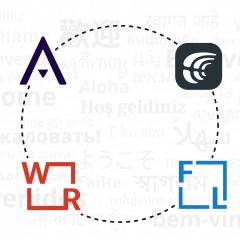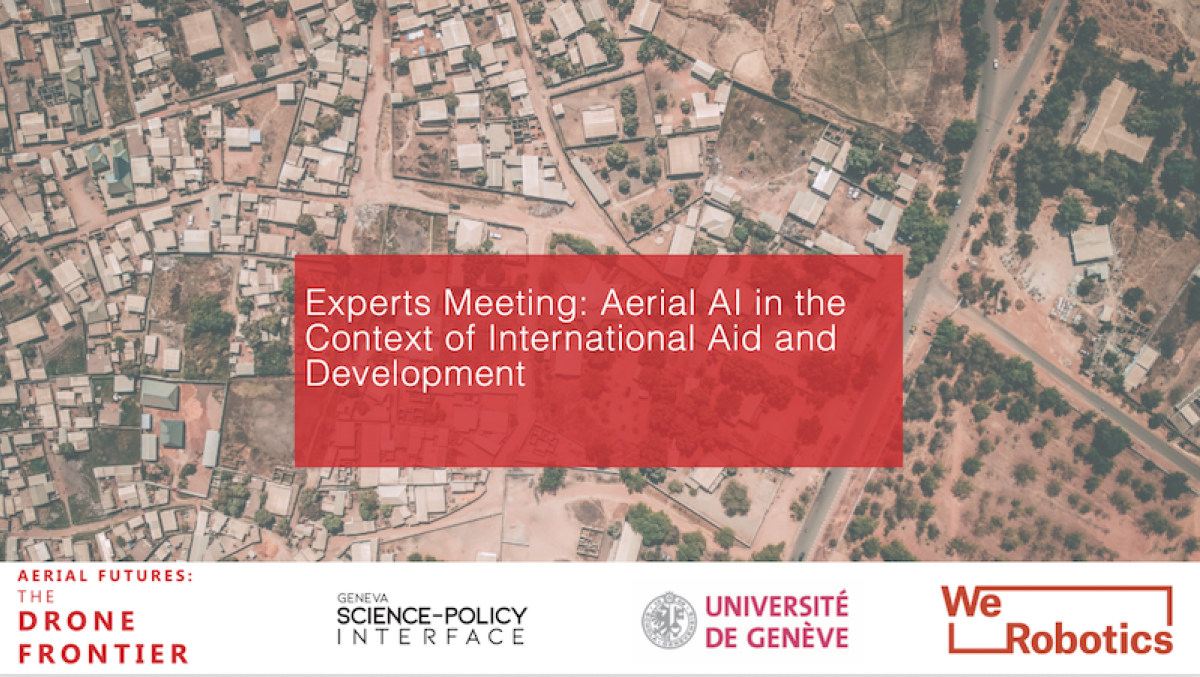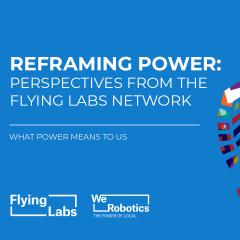
Aerial Intelligence in the Context of International Aid and Development
December 19th, 2018

The Geneva Science-Policy Interface, swissnex Boston and WeRobotics recently co-organized an “Experts Meeting” on the use of Aerial Intelligence in the Context of International Aid and Development. Participants discussed the latest advances, technical needs and partnership opportunities to enable the safe and responsible use of Artificial Intelligence (AI) to speed up the analysis of aerial and satellite imagery (Big Data).

The event, which was held in Geneva on December 6, 2018, is part of the WeRobotics series of experts meetings and swissnex Boston’s “Aerial Futures: the Drone Frontier.” A previous meeting addressed pivotal issues facing the safe, ethical and effective use of drones in humanitarian action. The first meeting focused on a critical review of cargo drone technologies, codes of conduct and medical-use cases.
The Geneva meeting took advantage of the city’s unique location: a global scientific and policy hub where scientists, international organisations, policymakers and private actors are using drones to address range of pressing global challenges. The event brought together a diverse panel of more than 30 participants from organisations like UNOSAT, IOM, UNHCR, ICRC, UNEP, WHO, MSF, Human Inclusion, Medair, Geneva International Center for Deming (GICHD), accademia from the University of Geneva, EPFL and ETH and startups such as Picterra.
After an introduction from Nicolas Seidler, Director of the Geneva Science-Policy Interface and Christian Simm, CEO of swissnex Boston, Patrick Meier set the stage with an introduction on aerial AI and its various applications in aid and development. In so doing, Patrick explained why aerial and satellite imagery pose a Big Data challenge. His talk was followed by 5 short lightning talks, which provided a range of perspectives and lessons learned from various stakeholders across different disciplines. The lightning sessions was concluded with videos from the finalists of the Open AI Challenge.

In the discussions that followed, participants identified important synergies and common challenges between their respective projects. For example, there was clearly a need to: update analytical solutions across the board; know how to weigh the tradeoff between the accuracy of AI-driven analysis versus the speed at which AI can deliver this analysis; selecting appropriate hardware and software solutions for onsite processing versus cloud processing; build local capacity in the use of AI; follow existing data protection and data sharing protocols; ensure that drone companies do so as well. The Humanitarian UAV Code of Conduct (UAVCode) was referenced multiple times during the meeting. Some of the most fruitful discussions were between field-based organizations and data scientists, with the former detailing their needs and the latter highlighting the latest available solutions from the field of AI, machine learning and computer vision to meet said needs. A number of new partnership opportunities were clearly evident during these discussions. We’re keen to see where these go.
Given the need for cross-disciplinary collaboration, participants also emphasized the need to facilitate and support the creation of interdisciplinary teams to advance the challenges discussed. In addition, participants expressed a strong need for follow up meetings to address other important challenges in the use of drones; such as the use of drones for humanitarian action in conflict zones, and the need to update the UAV Code to include the latest lessons learned and best practices.
 The experts meeting was followed by a public lecture by Patrick Meier on “Drones for Good: Humanitarian Action from the Sky” that was extended by a panel discussion facilitated by Christian Simm, including participants from the expert meeting as panelists.
The experts meeting was followed by a public lecture by Patrick Meier on “Drones for Good: Humanitarian Action from the Sky” that was extended by a panel discussion facilitated by Christian Simm, including participants from the expert meeting as panelists.
A short report on the experts meeting will be published shortly and we look forward to disseminate it and to moving forward the ideas formulated in Geneva with possible follow-up events. In the meantime, we would like to thank all participants of the meeting for their valuable contributions and extend our sincerest gratitude to The Geneva Science-Policy Interface and swissnex Boston for their invaluable support in organizing these two events.
Recent Articles

